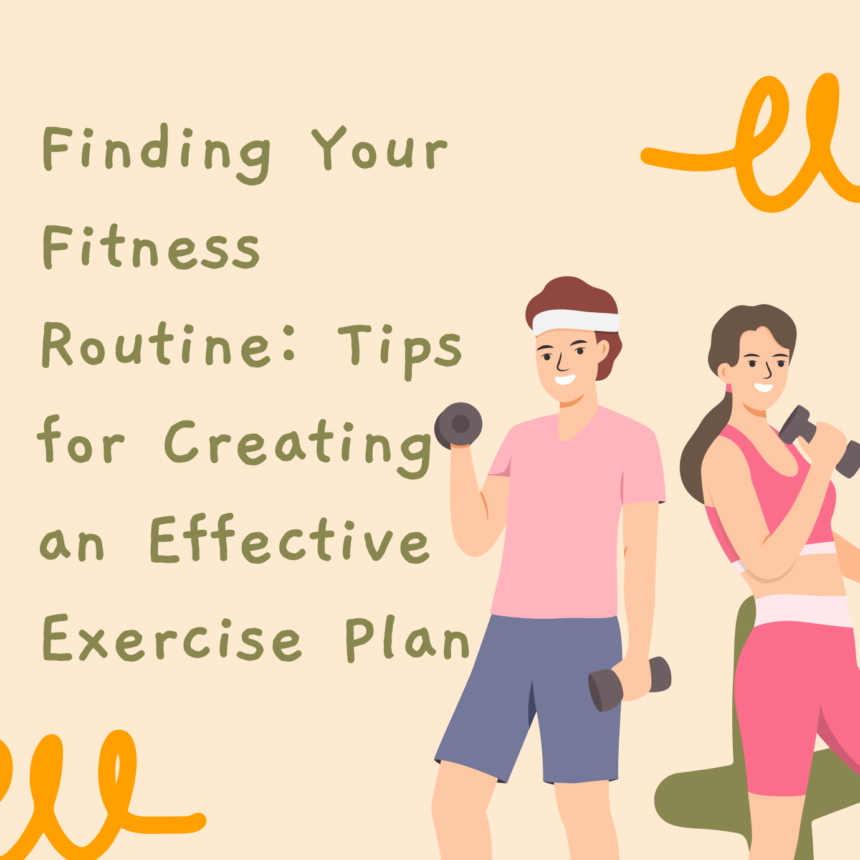Finding a fitness routine that works for you is essential for creating an effective exercise plan. By following these tips, you can develop a routine that is sustainable, enjoyable, and tailored to your individual needs and goals:
1. Set Clear Goals: Define your fitness goals to provide direction and motivation. Whether it’s improving cardiovascular endurance, building strength, losing weight, or enhancing flexibility, having specific goals will help shape your exercise plan.
2. Assess Your Fitness Level: Evaluate your current fitness level to determine where you stand and what areas need improvement. This assessment can involve measuring your endurance, strength, flexibility, and body composition. Consider consulting with a fitness professional for a comprehensive evaluation.
3. Choose Activities You Enjoy: Find activities that you genuinely enjoy. This could be anything from jogging, swimming, dancing, cycling, yoga, or team sports. When you enjoy what you do, you are more likely to stick with it long-term.
4. Incorporate Variety: Include a variety of exercises and activities in your routine to prevent boredom and work different muscle groups. Incorporate cardiovascular exercises, strength training, flexibility exercises, and activities that improve balance and coordination.
5. Start Slowly and Progress Gradually: If you’re new to exercise or returning after a break, start slowly to avoid injury and excessive soreness. Gradually increase the duration, intensity, and frequency of your workouts as your fitness level improves.
6. Prioritize Consistency: Consistency is key for seeing progress. Aim for regular exercise sessions throughout the week rather than sporadic intense workouts. Find a schedule that works for you and stick to it.
7. Set Realistic Expectations: Be realistic about what you can achieve within a given timeframe. Understand that fitness goals take time and effort to accomplish. Avoid comparing yourself to others and focus on your personal progress.
8. Listen to Your Body: Pay attention to your body’s signals. If you feel pain, fatigue, or discomfort, modify or take a break from your workout. Push yourself, but also respect your body’s limits and prioritize safety.
9. Include Rest and Recovery: Rest and recovery are integral parts of an effective exercise plan. Allow your body time to recover and repair between workouts. Adequate sleep, proper nutrition, and active recovery strategies like stretching or foam rolling can support your overall recovery process.
10. Track Your Progress: Keep track of your workouts, progress, and achievements. This can be done through a workout journal, a fitness app, or wearable fitness trackers. Tracking your progress helps you stay motivated and provides insights into your improvement.
11. Seek Professional Guidance: If you’re unsure about how to structure your exercise plan or want personalized guidance, consider consulting with a fitness professional, such as a personal trainer or exercise physiologist. They can provide expert advice and help tailor a program to your specific needs.
Remember, finding the right fitness routine is a journey of self-discovery. It may require some trial and error to determine what works best for you. Be patient, stay consistent, and enjoy the process of finding a routine that helps you achieve your fitness goals and promotes a healthier lifestyle.
